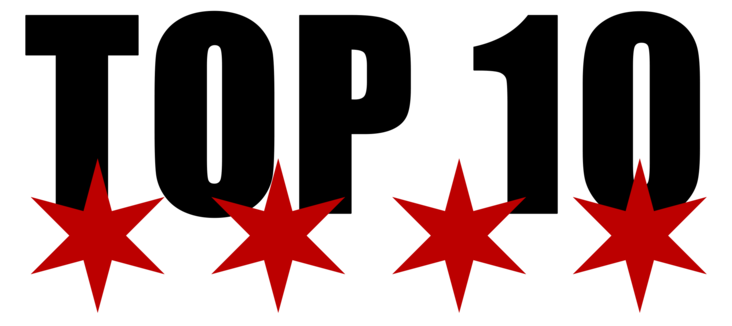The talks around the Chicago Bears running back position have remained active for almost a full year now. It’s been felt over that time that Matt Nagy isn’t satisfied with the status quo at the position. His offense demands backs who are quick, agile, and versatile. Jordan Howard, who has done great work the past three years for the team, just doesn’t fit the mold.
He’s a solid runner and built tough with good vision. One thing he is not is versatile. He just doesn’t have the natural hands or quickness to be a threat in the receiving game. Hence why the Bears were rumored to be looking into recent free agent Kareem Hunt. That opportunity disappeared though with him signing in Cleveland.
This has left many to ponder a bigger question. Would GM Ryan Pace unload both barrels this offseason and consider signing former Pro Bowler Le’Veon Bell. Word hit that the Steelers have no plans to tag him again, which means he will be a free agent. Can the Bears actually make that happen?
Yes. Will they? Well, that’s a bit more complicated question. Still, here is how it would likely go down with some help from OverTheCap.com.
Subscribe to the BFR podcast and ride shotgun with Dave and Ficky as they break down Bears football like nobody else.
Steelers are not tagging Le'Veon Bell, according to GM Kevin Colbert: "Le’Veon is still a great player. We can’t afford to use any other type of tags. Le’Veon will be an unrestricted free agent at the start of the new league year."
— Jeremy Fowler (@JFowlerESPN) February 20, 2019
Step #1: Cuts
This is the first and easiest step of the process. The Bears will have to cut loose any veterans who aren’t worth their current deals anymore for whatever cap space they can offer. In this instance, it will be tight end Dion Sims and outside linebacker Sam Acho. Their exits would net the team a collective $8.125 million in space. It’s not enough to do the job but it’s at least a good start for where they need to get.
Space remaining – $14.43 million
Step #2: Sign Le’Veon Bell
This is the difficult part because nobody knows for sure how much Bell will be demanding when the market opens. Naturally, he’ll want to be the highest-paid running back in football. Right now that honor belongs to Todd Gurley at $14.375 million per year. Odds are Bell will want to reach the next tier at $15 million. However, there is a way they might be able to keep the cap hit lower.
That’s by guaranteeing more of the deal. Typically a top running back has around 38-45% of their contract guaranteed. David Johnson though had a whopping 63.3% guaranteed. This enabled them to keep his cap hits much lower than normal through the first two years. The Bears could do something similar with Bell
In this case, he accepts the same four-year deal as Gurley at $57.5 million. However, unlike the 38.2% that Gurley was guaranteed, Bell will have 50%. Thus his contract looks as follows
- 2019 – $7 million (fully guaranteed)
- 2020 – $12 million (fully guaranteed)
- 2021 – $17 million ($9.75 million guaranteed)
- 2022 – $21.5 million (he will be 30-years old and likely cut by this point)
It’s a large pill for Bears ownership to swallow, but if they want to keep Bell’s cap hit low, then it is something they must do.
Space remaining – $7.929 million
Step #3: Restructure Khalil Mack and Allen Robinson deals
The two biggest cap hits on the Bears payroll going into 2019 belong to star pass rusher Khalil Mack ($22.3 million) and wide receiver Allen Robinson ($15 million). The goal for Pace here is to convert money in those contract into bonuses that would lower their cap hits. In this case, Mack restructures $6 million with a $3 million roster bonus while Robinson restructures $5 million with a $2 million roster bonus.
This drops their cap hits to $15.1 million and $11.5 million respectively. This is the biggest step is clearing the space required to fit Bell’s contract while still being able to operate with other in-house free agents and the draft class.
Space remaining – $18.62 million
Step #4: Trade Jordan Howard
With Bell on the roster, it makes the next step a logical one. The Bears will no longer have a need to keep Jordan Howard on the roster. They will begin the process of trading him elsewhere. The main issue is other teams will know this and likely not offer up much to get him, what with his contract in its final year. Odds are the Bears wouldn’t get more than a 5th round pick for him. Though his exit would net an additional $2 million in cap space.
Space remaining – $20.134 million
Why the Bears won’t do it
The best way to phrase this is “short-term gain but long-term pain.” Getting Bell does put another star-level talent on their offense but it also drops a potential poison pill onto their entire pay structure. The Mack and Robinson contracts will deal much bigger cap hits in 2020 at $25.8 million and $18.5 million respectively. That’s with Bell’s also rising to $12 million.
Making matters worse is the fact that key players like Leonard Floyd, Cody Whitehair, and Danny Trevathan will all be due for new contracts. There is no way the Bears will have enough money to keep them. Never mind the Mitch Trubisky and Eddie Jackson deals looming around the corner in 2021 as well. This is a likely cap nightmare in the making.
Last but not least? The Bears don’t need Bell. They may want him, but need him? No. Good running backs are far easier to find than any other position in football. Pace has already proven that. He drafted Howard in the 5th round and Tarik Cohen in the 4th. It stands to reason he can find somebody who fits this new system without having to break the bank for a 27-year old veteran.












